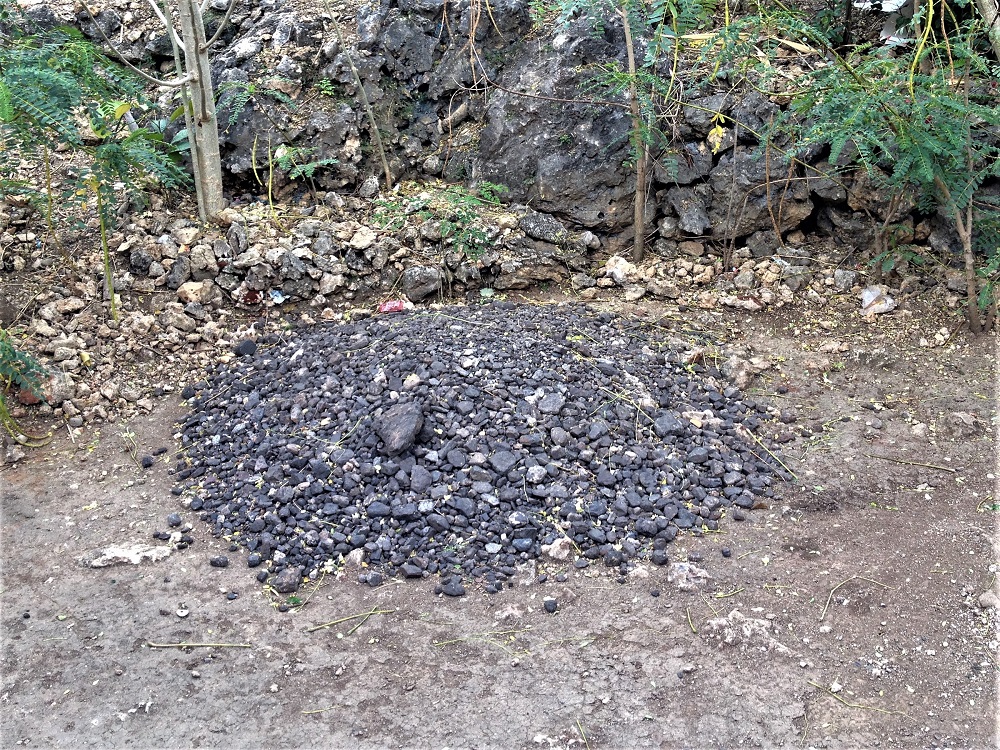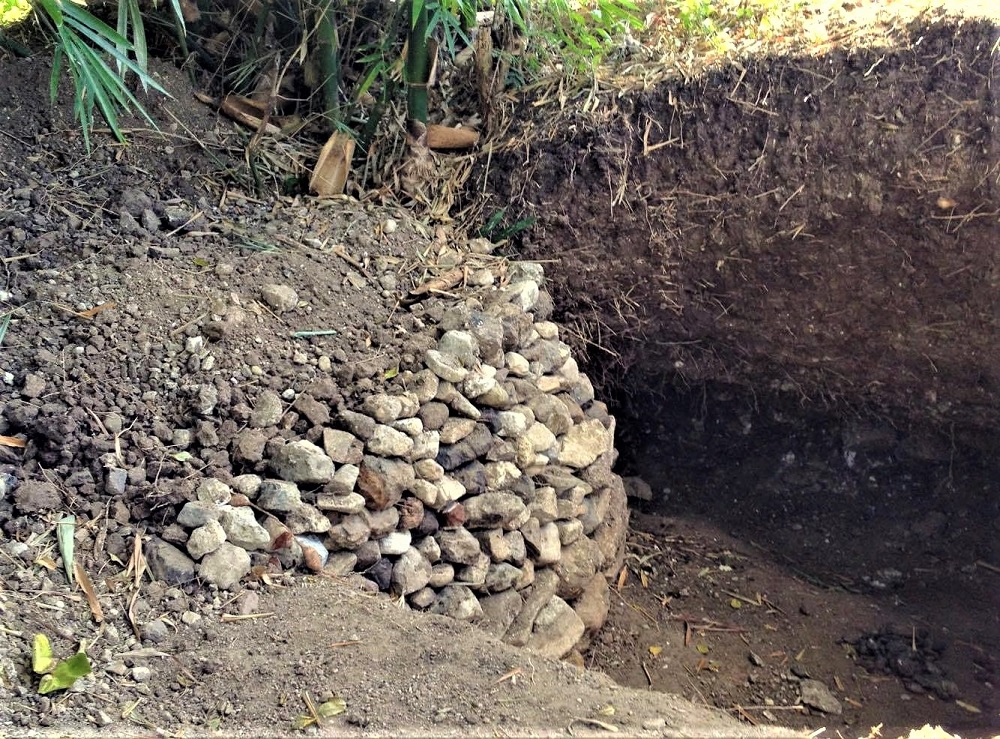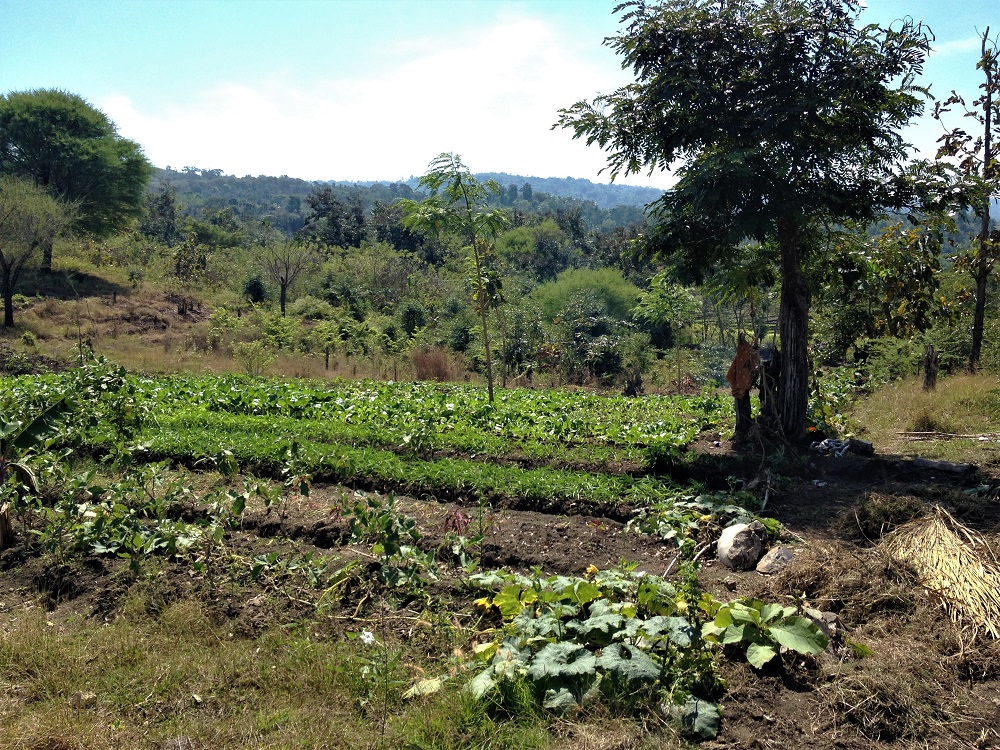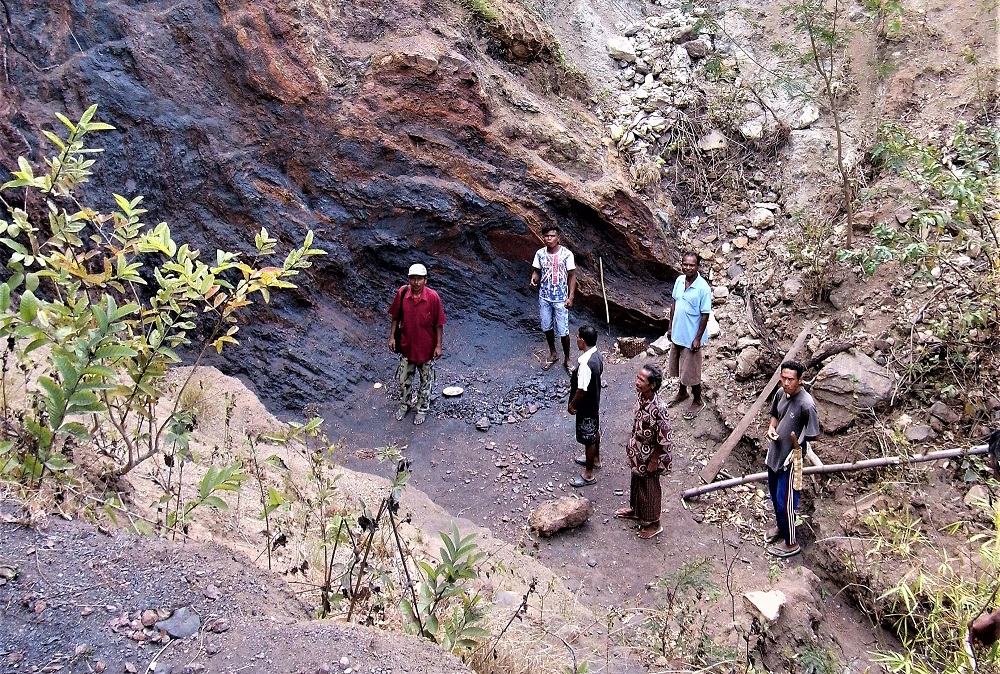Small-scale manganese mining supports livelihood diversity
Community mining in West Timor has increased livelihood diversity by providing a much-needed alternative source of income. The majority of mining activities in Indonesia, both large- and small-scale, are often associated with high levels of negative environmental and social impacts, and profits rarely reach the local communities. In contrast, manganese mining in West Timor is managed at the local level for the long-term benefit of the community. While the situation is not perfect and there are examples of environmental degradation, of conflict and health issues and money not wisely spent, the management of these impacts is within the ability of the community to address effectively. Without the involvement of large-scale companies in mining activities, communities are responsible for managing the negative impacts but at the same time have the autonomy to direct the income derived from mining to create empowering local development.
Beginning in 2007, small-scale mining of the mineral ore manganese quickly became a significant livelihood activity across all five districts of Indonesian Timor. Mining practices are relatively low-tech: the ore is dug out from the ground using hand tools, or simply picked up from the surface, scraped, washed clean and packed into bags to sell to visiting traders. The manganese is then taken by truck to a port and shipped to a smelter either in China or, more recently, within Indonesia. After processing, most manganese (about 90 per cent) is used in steel production.
Manganese ore occurs as a heavy black rock, sometimes as large boulders, but often as pebble-sized nodules. It can also occur as sheets of manganese, layered with other minerals in larger deposits. Unlike manganese deposits in other countries, manganese in West Timor occurs not as one or a few large deposits, but as many small, scattered and sporadic deposits across the island. The unusual distribution of manganese is due to the geological processes that created the island of Timor. As the Australian and Asian plates collided, the sea floor was lifted to the surface about five million years ago, to create what is now Timor Island. During this process, the manganese deposits became highly mixed and dispersed, so that now between 50 to 70 per cent of villages have manganese ore present in their rivers and creeks, farming land, forests and open land.

Manganese ore nodules, ready for packing to sell. 50 to 70 per cent of villages on Timor Island have manganese ore present. (Hannah Ling)
The small size and unpredictability of manganese ore deposits in West Timor means that mining is economically risky for larger-scale operations, but ideal for small-scale mining. The ore is close to the surface, little to no processing is required before selling and it is common and widespread across the landscape. Most manganese miners in West Timor are local community members who mine on their own land or land within their village. Mining is an alternative livelihood and complements farming activities, with most miners focusing on manganese in non-productive periods of the farming season. Despite this, little recognition has been paid to the potential benefits from small-scale mining to local communities.
Livelihood contributions from mining
Informal manganese mining has increased livelihood diversity by providing an alternative source of income. The majority of the population in West Timor relies on income from farming, a seasonal activity which is vulnerable to drought, pests and diseases. Mining activities can be carried out during quieter farming seasons and can also act as a safety net when crops fail. Unlike high-value minerals such as gold, manganese has low commercial value with the average price over the past ten years sitting at around Rp.1000 per kilogram (US$0.08), although it can fluctuate between Rp.500–1500 (US$0.04–0.12) per kilogram. Most households can mine between 10 and 100 kilograms per day, giving an average weekly income of Rp.70,000–700,000 (US$5.60–56) if actively mining every day. Because the price of manganese is low, hard work is required to generate substantial income, and benefits are fairly evenly spread throughout a community. Income from mining can be used to invest into farming livelihoods, by purchasing livestock, seeds and arable land. Other common uses of income from mining include supporting children’s education, improvements to houses and the purchase of motorbikes.
Negative impacts from mining
Most detrimental environmental impacts can be addressed relatively easily. Shallow holes from mining will naturally fill in over a year or so, and larger holes can be filled manually and bananas or coconuts seedlings planted to stabilise the topsoil. As on-site processing of manganese is not required, no dangerous chemicals are added to the local environment. The washing of manganese can lead to increased sedimentation in creeks and rivers; however, this can be mitigated by cleaning in strategically located ponds.
Health impacts may also be a concern. Manganese is not a highly toxic metal, being an essential mineral in the human diet. However, if inhaled as dust, it can become dangerous over time. Other minerals may also be present in the soil, particularly in layered deposits, such as uranium and lead, which are highly toxic and need to be considered. Death and injuries from mine collapses were common in Timor in the first few years of mining, but as people have become more aware of the dangers of unstable excavations, accidents have been greatly reduced.

A small manganese mine in Kupang. (Hannah Ling)
Most miners work within their own farming community, so social issues that arise from mining, such as people mining on other’s land without permission, are usually dealt with through the traditional governance structures which already exist. Ongoing social conflict is uncommon. Because mining activities are managed by the local community, sacred sites can be protected and mining carried out in accordance with traditional spiritual practices.
The detrimental impacts increase significantly when mining involves heavy machinery and larger-scale mining companies. Excavators can cause higher erosion rates, particularly on steep slopes, creating extensive topsoil damage and mixing bottom layers of soil with the fertile topsoil, so that some areas are no longer suitable for farming. Mining companies can also create conflict when buying or renting land from landowners, as these substantial economic benefits are difficult to distribute equally through a traditional land ownership system, leading to jealousy and greed within communities. The negative impacts are not as extreme in community mining and the benefits are directly received and enjoyed by the local people.
Strengthening benefits, addressing impacts
In some cases, mining activities have been directly beneficial to farming. Manganese absorbs heat and can keep the soil hot and dry, so the removal of manganese rocks from farming land can make it more suitable for growing crops. In one village in South Central Timor, manganese occurs as sheets below the surface so that crop plants cannot penetrate and develop deeper root systems. After mining this land has been converted into productive terraced market gardens. In another location near Kupang, a landholder mined on the edges of a hillside that broadened his rice field so he can now plant more rice each year.

A productive terraced market garden on previously mined land, South Central Timor. (Hannah Ling)
Manganese mining provides an opportunity to increase household income and improve living conditions. The economic benefits could be strengthened through education on financial management, as money from manganese is often referred to as ‘hot money’, disappearing as quickly as it arrives. Some miners have been able to save money from manganese. One elderly farmer described how he saved the money from mining and bought fifty chickens which he breeds and sells every three months providing the income he needs to supplement his other farming activities. Others have been caught up in the fever of mining, leaving their farms to focus only on manganese. If such people become completely dependent on mining, they will be very vulnerable when the prices fall, or the ore runs out and the buyers leave. Many, however, are wise and state that farming is always the primary livelihood – their way of life and main activity. They see mining as an endeavour that can complement farming and provide the additional income needed to buy a zinc roof or complete their children’s high school education.
Recognising and supporting community mining
Manganese mining offers an opportunity to support livelihood diversity and provide economic benefits at the local level. The detrimental impacts of manganese mining, such as soil erosion and mine collapse, can be managed relatively easily by local communities. The research indicates that, in general, mining activities carried out by communities deliver more local benefits and less negative impacts such as environmental degradation, health issues and conflict, than mines that are managed by large-scale companies in West Timor. Despite this, no community mining licenses have been granted in West Timor for manganese mining, and the value of manganese mining for self-driven community development remains largely unrecognised. Now that the newly reinstated Law No.23/2014 has returned the authority of granting mining licences from the district level to the provincial government departments, it will become the responsibility of the provincial level to recognise and support what could create a positive and uplifting change for the farming communities of West Timor.
Hannah Ling (hannahjane.ling@cdu.edu.au) is a PhD candidate in the Research Institute for the Environment and Livelihoods at Charles Darwin University. This research was funded and supported by the Australian Department of Foreign Affairs and Trade, Universitas Nusa Cendana and Charles Darwin University.












